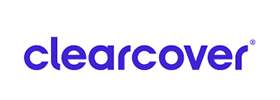Your auto insurance rates could soon be set based on how you, personally, drive–not on your statistical risk.
General Motors Co. (GM) has launched an auto insurance program with its OnStar subsidiary to match data on driving patterns and usage to insurance costs. Tesla and Ford have also announced initiatives, according to Claims Journal.
Right now, insurance companies use criteria such as age, gender, neighborhood and/or credit scores to set insurance prices. Consumer advocates have found this unfair because a good driver could live in a neighborhood that is unsafe and have a lower credit score.
Statistically, a teenage boy is the world’s worst auto insurance risk and insurance rates reflect this. But with usage-based insurance pricing, even a teenage boy might be able to demonstrate he is a good risk.
The mechanism of future insurance pricing will come from telematics–devices that collect real-time information on driving patterns and use. According to JD Power, demand for insurance based on telematics has increased during the pandemic as customers, working from home, thought they could save money on insurance.
What that could mean for good drivers and drivers who don’t drive much is lower rates. Bad drivers would get higher rates. Depending on how the technology is deployed, drivers might get real-time feedback about how they are doing, according to the Insurance Information Institute (III). That could be like having a permanent back-seat driver who is always right. But drivers do respond when they have incentives to drive better, according to iii.org.
A study by Willis Towers Watson showed that, in commercial fleets monitored by telematics, crash rates fell by 80 percent.
But will drivers have privacy concerns, or will they resent having their every driving move monitored? Another survey by Willis Towers Watson suggests not. Resistance to the idea of cars monitoring driving is low, about seven percent.
GM will use data from its on-board concierge service, OnStar. The service helps drivers in emergencies and with navigation, but it also collects data on driving patterns. It takes special note of hard braking and acceleration.
Tesla’s initiative hasn’t yet launched.
Ford Motor Company has teamed up with Allstate Corporation to allow customers to share driving data.
GM says its OnStar program has provided the company with more data from connected vehicles than any other carmaker, as quoted in Claims Journal.
The company’s insurance offer will start in Arizona and use braking, acceleration, and general usage data to help set insurance rates. The program is set to expand nationwide using more data, including tire pressure, lane keeping and automated braking. More use of connected car data could be used if regulatory hurdles can be overcome.
Month: January 2021
Consider assets when buying auto insurance
We’re inundated with car insurance ads at every turn, each pledging better rates or more personal service. But aside from knowing what your premium is, do you know what your coverage is and whether you have enough?
Your policy will cover liability, bodily injury liability (BIL), property damage, personal injury protection, uninsured/underinsured motorist coverage, collision and comprehensive.
Many states require a minimum amount of coverage, but you probably want to consider insuring for more. Medical bills can add up to many thousands in a hurry, and you don’t want to be on the hook.
Liability packages often have three numbers, like 100/300/100. This refers to the amount of coverage for bodily injury per person (100k), per accident (300k), and property damage (100k). Individuals with higher net worths may want to boost the first two.
The Wall Street Journal says a good rule of thumb is to get coverage for an amount equal to the total value of your assets (house, car, savings, and investments). Those could be seized to cover repairs or medical expenses otherwise.
Uninsured/underinsured motorist coverage is also vitally important. This pays for damage to your car and passenger injuries caused by an at-fault driver who doesn’t have liability insurance, or a hit-and-run driver. Consumer Reports suggests buying the same limits as on your liability insurance.
Remember also to sign up for the highest deductible you can afford, which will reduce your premiums.
Do You Need RV Insurance All Year Round?
Living in the Cypress, TX area has its perks and benefits, and one of those is the opportunity to explore the local area and travel the country from a centralized location. But if you’re using the area as a home base and spending a lot of time on adventures, you may want to make sure you have the right type and level of RV insurance. At InsureUS, we can help you go over your policy and see if there are changes that need to be made. Then you can feel good about the policy you have and you’ll be able to focus on the fun of traveling and seeing the sights.
Protecting your RV is valuable and important, so it’s ready to go whenever you are. A lot of people only travel in the summertime, when their children are out of school and they can take some time away from work or other obligations. If that’s how you use your RV, you might be wondering whether you need to keep it insured all year round. It’s not being driven, so why cover it? There are other problems that can occur, though, such as theft or vandalism. You want to be covered for those things, even if you’re not worried about something that could happen out on the road.
Having your RV insurance in effect all year round is the better and safer choice, so you don’t have to worry about your RV during the months you’re not using it. By reaching out to us today at InsureUs, we can help you cover your Cypress, TX RV with a policy that’s going to give you quality coverage. Then you can enjoy your RV, your peace of mind, and all the adventures you’ll have as you travel.
PPP loans and taxed expenses
The IRS issued guidance in November clarifying the tax treatment of PPP loans that have not been forgiven by the end of the year the loan was received:
- Businesses are not taxed on the proceeds of a forgiven PPP loan, so the expenses are not deductible.
This means that the taxpayer sees neither harm nor benefit, since the taxpayer has paid nothing out of pocket.
Here is how this looks on your tax return, according to bench.com:
A C-corporation receives $100,000 in a PPP loan, uses the money entirely on payroll and qualifies for loan forgiveness.
The $100,000 won’t be listed as taxable income on the tax return.
BUT, the tax deduction the business would normally get (about $21,000) won’t be allowable. So, surprise — you have an extra $21,000 tax liability (assuming 21 percent corporate tax). You did receive a net $79,000 from the program, which you have already spent, but which you might not have had otherwise. - Businesses are encouraged to file for forgiveness as soon as possible. If a business believes a PPP loan will be forgiven in the future, expenses related to the loan are not deductible, whether the business has filed for forgiveness or not.
- If a PPP loan is expected to be forgiven but it is not, the business WILL be able to deduct expenses.
According to the CARES Act, a forgiven loan amount won’t be included in taxable income.
New Year’s Resolutions: How to put change ahead of comfort
The urge for self-improvement is strong at the start of a new year. It’s a time for looking back to see what kind of person we have been, and a time for looking forward and visualizing ourselves as the person we want to be.
Here we come to a big question: Is the urge for change more powerful than the drive to revert to what is comfortable to you? At first, change seems manageable, but as time goes on, we may tire like a runner in a long race. Then, as difficulties of our daily lives surround us, returning to our comfort zones could seem more important than making changes.
Keep these points in mind when making resolutions:
- When one resolution involves an important life-style change, don’t make any others. If you want to quit smoking, lose weight, and learn a foreign language, you won’t be able to do all three things at once.
- Study the obstacles to your resolution and determine ways to deal with them. If you want to lose weight, for example, decide to skip the ice cream and have a low-calorie popsicle instead. Tell friends you are not eating rich desserts, so they won’t tempt you.
- Think about professional help. Medical assistance could be valuable in stopping an addictive habit.
- Maintain your focus and monitor your progress. Keep a notebook and record how often the behavior you want to change occurs, who you were with and how you felt. You’ll see a pattern that could be avoided in the future.
- If you break a resolution, don’t give up on the effort. See it as an opportunity for self-understanding. Treat yourself kindly.
New Year’s resolutions are supposed to make you feel good about yourself. If not keeping them makes you think badly about yourself, they aren’t worth the effort. Work at it but lighten up and feel good.







































